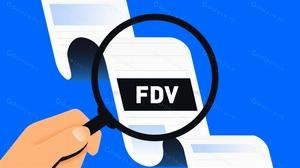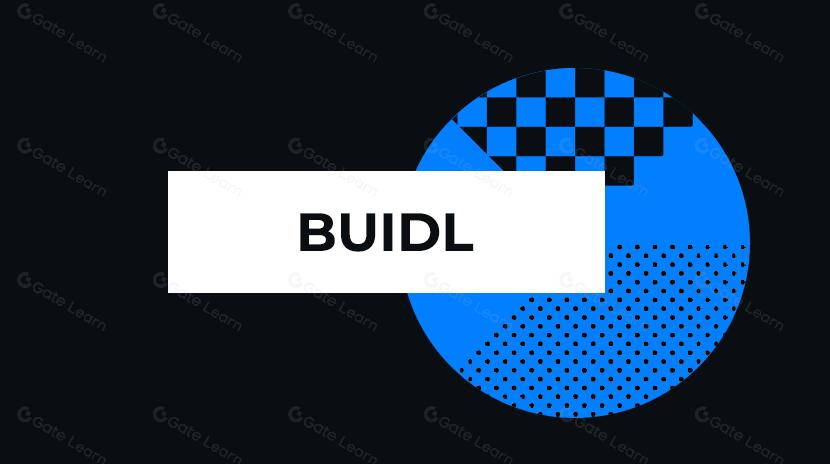VanaのAIをより良く構築するために、CZがなぜバリッシュなのかについての分析
AIデータ不足の時代において、Vanaはどのようにしてブロックチェーンを活用してテックジャイアントの独占を打破しているのでしょうか?この記事では、DataDAOメカニズムがユーザーにデータ主権の制御、モデル利益分配の獲得、民主化されたAIエコシステムの育成をどのように支援しているかについて詳しく掘り下げています。Teslaの運転データから遺伝子プライバシーの戦いまで、次世代データインフラへの投資をなぜCZやトップVCが行っているのかを明らかにします。1か月前、YZi LabsはBinanceの創設者であるCZがアドバイザーとして参加したVanaへの投資を発表し、VanaのAIデータセクターでのリーディングポジションを確立しました。4日後、VanaとのAMA中、CZはデータがAIの核となる燃料であり、公共データは枯渇しており、プライベートデータは未開拓であると述べました。彼はVanaの製品市場適合性(PMF)とユーザー増加に対する楽観を表明しました。
なぜYZi Labs、Coinbase Ventures、およびParadigmがVanaに投資したのか?なぜCZがVanaの開発に楽観的なのか?
このレポートは、AIデータの課題、Vanaのコアバリュープロポジション、実用的な応用、および将来の成長軌道を体系的に分析し、VanaがAIエコシステムの重要なインフラストラクチャとなりつつある方法を明らかにしています。

01 AIとデータのジレンマ:閉ざされた障壁を突破する
According to PitchBook data, the U.S. The AI industry attracted nearly 20 billion in investments in Q1 2025. By 2024, AI startups accounted for one−third global venture capital, totaling 131.5 billion, with nearly a quarter of new ventures focusing on AI. Statista data further confirms this explosive growth—venture funding for AI and machine learning surged from 670 million in 2011 to 36 billion in 2020, a 50-fold increase. This trend clearly indicates that AI has become the shared choice of smart capital and top entrepreneurs.
しかしながら、AIの基本的なアーキテクチャーである「データ+モデル+計算」は、構造的なボトルネックに直面しています。AIモデルのパフォーマンスの中心的な要素は、計算能力やアルゴリズムの突破口ではなく、トレーニングデータセットの質とスケールです。現在の大規模言語モデルは、データの枯渇の臨界点に近づいています。MetaのLlama 3は約15兆トークンで訓練され、ほぼすべての高品質な公共インターネットデータを枯渇させました。公共インターネットデータの膨大な量にもかかわらず、それは氷山の一角に過ぎません。広く見過ごされている事実は、高価値のデータが主に権限のあるアクセスを必要とする専用システムにロックされていることです。公共インターネットデータはすべてのデータの0.1%未満を占めています。この問題は、単独で解決するAI産業の能力を超えており、データの生産関係を再定義し、新しいインセンティブメカニズムを確立し、スケールで高品質のデータの出現を促進するためにブロックチェーン技術が必要とされています。
一方、今日、ほとんどのデータは閉ざされたエコシステム内のWeb2テクノロジー企業によって制御されています。 AIの開発は、これらの企業がデータの莫大な価値を認識しているため存在するデータの壁という課題に直面しています。 高品質のAIモデルは、例えばOpenAIの年間収益が約34億ドルに達しているように、膨大な経済的リターンを生み出します。 優れたAIモデルの構築には、しばしば高額な取得コストで大量のデータが必要です。
Redditは、データの販売から年間約2億ドルを稼いでおり、写真は1〜2米ドルの料金がかかり、Appleのニュースデータ取引額は5,000万米ドルです。データ所有権は、単なるプライバシーの選択肢から主要な経済問題へと進化しています。AIモデルが経済の大部分を牽引する世界では、データ所有権は将来のAIモデルに対する株式保有に等しいものとなります。
データ商業化がますます一般的になるにつれて、データへのアクセスがますます困難になっています。多くのプラットフォームが外部開発者のアクセスを制限するために、利用規約やAPIポリシーを調整しています。たとえば、RedditやStack OverflowなどがAPIルールを変更し、データ取得をより困難にしています。この傾向は拡大しており、データ豊富なプラットフォームがますます排他的に動いています。
しかし、1つのグループだけがこのデータに自由にアクセスできます:ユーザー自身です。多くの人々が法的に自分たちのデータの完全な所有権を保持していることを知らない。駐車場に車を駐車するだけでは、駐車場がその車に対する権利を持つわけではありません。ソーシャルプラットフォームに保存されているユーザーのデータも彼らの所有物であり続けます。
登録時、ユーザーは通常、プラットフォームが「データを使用する」ことを許可するチェックボックスをオンにします。これにより、プラットフォームはサービスを提供する権限を得ますが、所有権を放棄するわけではありません。ユーザーはいつでもデータをリクエストすることができます。たとえプラットフォームが開発者に対するAPIアクセスを制限しても、個々のユーザーは依然として合法的にデータを取得することができます。たとえば、Instagramでは、ユーザーがアカウントデータ(写真、コメント、さらにはAIによって生成されたマーケティングタグを含む)をエクスポートすることができます。23andMeでは、ユーザーが遺伝子データをリクエストすることができますが、プロセスが直感的でない場合もあります。
グローバルにおいて、規制が改善され、ユーザーが自分のデータを取り戻せるようになっています。データの価値が高まるにつれて、ユーザーは自分の所有権を認識し、行使する必要があります。
02 VANAのコアコンセプト
テック企業は貴重なデータ資産を保護するために閉じたシステムを構築しています。VANAのミッションは、このデータを解放し、ユーザーにコントロールを返し、データ主権を可能にすることです。
言い換えれば、ユーザーはさまざまなプラットフォームからデータを抽出し、既存のプラットフォームの提供よりも優れたデータセットを作成することができます。
VANAのフレームワークは2つの基本的なコンセプトに基づいて構築されています:
- 非保管データ:ユーザーはデジタルウォレットで暗号資産を管理するようにデータアクセスを制御します。VANAのエコシステムでは、ユーザーは署名されたトランザクションを介してアプリにデータへのアクセスを許可し、自律性とセキュリティを確保します。
- 貢献の証明:単一のデータポイントは無視できる価値しか持たないが、集約されたデータの価値は指数関数的に成長する。このメカニズムは高品質なデータプールを確保し、貢献者に価値を創出します。
開発者がデータにアクセスするために支払うと、貢献者はその入力に比例したガバナンストークンを受け取ります。これにより、貢献者は継続的な報酬を得ることができ、意思決定に参加し、データ市場の価格設定と効率を再構築することができます。
03 VANAのエコシステムアプリケーション
3.1 DataDAO
DataDAOは、VANAエコシステム内の分散型データマーケットプレイスであり、ユーザーがデータを貢献し、トークン化し、利用することを可能にします。ユーザーは、適切なデータマイニングプール(例:フィットネスデータ、研究データ)を選択してデータを貢献することができます。貢献されたデータは、VANAのProof-of-Contributionメカニズムによって検証され、その品質と価値が評価され、貢献者に適正な報酬が支払われることが保証されます。
Once verified, the data is tokenized into digital assets that can be traded or used for AI training, while contributors retain control over its usage. Each time the data is utilized, contributors receive token rewards and governance rights, allowing them to benefit economically and influence the direction of the data pool. By aggregating diverse datasets, DataDAO creates a liquid data marketplace, facilitating secure and efficient data circulation within the VANA ecosystem.
DataDAOの核心にあるのはData Liquidity Pool(DLP)です—トークンにリンクされた検証済みデータセットのコレクションです。DLPは、ガバナンス権を持つDataDAOメンバーによって管理されています。各DLPは、そのデータ構造と貢献基準を明確に定義しています。たとえば、睡眠に焦点を当てたDataDAOであるSleep.comは、すべてのオンチェーンデータが構造化されて使いやすいことを確実にするために、明確に定義されたデータスキーマを確立しています。データの価値は、そのボリュームだけでなく、その構造とアクセシビリティにもあります。
DataDAOはデータの信頼性と妥当性に重点を置いています。現在、ほとんどのDataDAOは、データの妥当性を確認するためにPythonスクリプトを実行するためにTrusted Execution Environments (TEEs)を使用しており、品質を保ちながらプライバシーを守っています。例えば、Amazon DataDAOでは、ブラウザ拡張機能を使用してデータ品質の証拠を生成しています。すべてのDataDAOは、Proof-of-Contributionメカニズムを公開し、ユーザーがデータ品質がどのように確保されているかを理解できるようにしています。
VANAエコシステム内のトップ16のDLPは、追加のインセンティブを受け取り、ユーザーが高品質なデータを提供することで報酬を獲得できるようになります。報酬は、データへのアクセス頻度、品質、コスト効率などのメトリクスに基づいて分配されます。現在、Reddit DataDAOは最大であり、約14万人のユーザーを魅了し、コミュニティ所有のAIモデルの訓練に成功しています。DLP LabsのDataDAOを使用すると、トラック運転手はDIMO_Networkアカウントを接続し、車両データを共有して報酬を獲得し、自動車部門におけるAI革新を進めることができます。一方、23andWEは、23andMeの買収を目指し、遺伝子データが悪用されるのを防ぐことを目指しています。
DataDAOは、データ管理に革新的なアプローチを提供し、個人がデータをコントロールし、トークン化を通じて収益化することを可能にします。この急速に進化するエコシステムは、データガバナンスやAIトレーニングにおいてよりオープンで民主的な可能性を提供しています。
3.2 データファイ
データ流動性プールの基盤の上に構築され、DeFiは徐々にデータトークンの領域に適用されています。データ流動性プールは、さまざまなDeFiアプリケーションがデータトークンを使用して構築される基礎的なレイヤーとして機能します。
現在、Data DeFiエコシステムにおいていくつかの早期のアプリケーションが登場しています。例えば、分散型取引所Gate.comのような@VanaDataDexと@flur_protocol特定のデータトークンの取引と市場動向の追跡をユーザーに許可します。これらのプラットフォームの登場により、データ資産の自由な流れが促進され、データマーケットが活性化されました。
ほとんどのDLP報酬メカニズムは、データトークンを直接燃やしたり、供給と需要に影響を与えたりするのではなく、主にDLP財務省に報酬を預け入れることに価値があることに注意する価値がある。 ただし、VRC-13アップデートの導入により、このメカニズムは進化しました。 新しいモデルは、より市場志向のアプローチを導入しています。 データトークン化を促進するためにVANA報酬をインセンティブとし、それらをDEXプールに注入してデータトークン取引を強化し、さらにDeFiエコシステムを活性化する。
将来、現在DeFiスペースで実現可能な機能(貸出、ステーキング、流動性マイニング、さらには保険など)が、データトークン市場に導入され、全く新しいアプリケーションシナリオが生まれるかもしれません。
伝統的なWeb2産業の観点からは、企業が価格変動に対するヘッジとして石油先物を購入するのと同様に、データ市場はデータ先物を開発するかもしれず、ユーザーが将来のデータセットの価格を事前にロックし、取得コストの不確実性を減らすことができるようになるかもしれません。
一部の取引企業はすでにデータを新たな資産クラスとして扱い始めており、特定のデータトークンの価値を評価する方法や販売利用の確率、ライフサイクル分析などの評価方法を研究しています。これらの要因はデータトークンの価格や市場流動性に直接影響を与え、革新の余地を残しています。
3.3 ストリームライン化されたデータアクセス
現在、メインネット上のデータセットへのアクセスは比較的手間がかかります。ユーザーは必要なもの、支払金額、プロジェクトコードを指定した詳細なリクエストを提出し、承認を待ってからアクセスできるようになります。これにより透明性と標準化が確保されますが、運用上の摩擦を生み出します。
効率を向上させるために、Vanaは、自動化されたAPIアクセスと複数のDataDAO全体で直接データを取得することを可能にするより効率的なデータアクセス方法を開発しています。たとえば、将来的には、ユーザーは睡眠データをCoinbaseやBinanceの取引データと組み合わせて、特定のトークン保有者の睡眠パターンを分析し、新しい市場の洞察を明らかにすることができるかもしれません。
さらに、Vanaは、データアクセス権と引き換えに、データトークンとVANAを80-20の標準比率で燃やす新しい提案を推進しています。
Vanaは新しいデータクエリインターフェースを開発し、データアクセスプロセスを大幅に簡素化しました。ユーザーはウォレットログインを介して認証し、デジタル署名を生成してアクセス権限を確認できます。Data Liquidity Pools(DLPs)がデータ形式を記録するため、ユーザーはデータ構造を明確に理解し、SQLクエリを使用して必要な情報を取得できます。このプロセス中、ユーザーはまず合成データサンプルを受け取り、クエリの正確性をテストおよび検証できます。実データを扱う際、すべての計算はTrusted Execution Environments(TEEs)内で実行され、データセキュリティが確保されます。このメカニズムにより、「二重利用データ問題」(ユーザーが購入したデータを再販売する可能性がある問題)が効果的に防がれ、データの経済的価値が保護され、データマーケットプレイスの持続可能な発展が確保されます。
04 ヴァナの価値分析
データは急速にデジタル時代の中核資産として浮上しています。データ収集および保存技術はかなり成熟していますが、真の課題はデータ品質を効果的に評価し、その価値を最大化し、プライバシー保護を確保することにあります。Vanaは革新的なインセンティブメカニズムを通じてこの課題に上手く対処しています:ユーザーはVANAトークンをステークして高価値なDataDAOをサポートし、対応するリワードを獲得することができ、価値創造の好循環を生み出します。
4.1"データウォール"を突破する
AI開発は「データの壁」に直面しています - 高品質な公共データリソースが枯渇しつつあります。AIの将来のブレークスルーは、個人の健康記録、スマートデバイスの使用データ、および潜在的なトレーニングリソースとしてのTeslaの運転ビデオなど、高付加価値なプライベートデータに効果的にアクセスして活用することに必然的に依存するでしょう。
データの価値には逆説が存在します: データは排他性を通じてその価値を維持しますが、一度広く入手可能になると商品化され、価値が減少します。AIモデル自体が商品化される中、長期的な競争上の優位性は、専門分野での優れたパフォーマンスを実現するユニークなデータセットを制御することから生まれます。データが一般に公開されると、価格競争がほぼ直ちに発生し、価値が急速に浸食されます。
Vana’s DataDAOは、信頼できる実行環境(TEEs)を活用して、高価値なプライベートデータの転送を可能にし、同時にプライバシーを保護しています。 このブレークスルーにより、貴重なデータアセットの範囲が限られた公共データセットからプライベートデータの広大な領域に拡大し、AIの進歩に新たな可能性が開かれています。
4.2 データのユニークな価値曲線
データは独自の価値曲線を示しています:個々のデータポイントは無視できるほどの価値しか持たず、しかし臨界量に集約されるとその価値は指数関数的に成長します。この特性はデータの収益化において重要な課題を提起します - 集合データセットが形成された後にのみ、実質的なリターンが現れます。
Vana's DataDAOメカニズムは、このジレンマに革新的な解決策を提供します。同様のデータをプールすることで、DataDAOは貢献者に集団交渉力を提供します。テスラのオーナーを考えてみてください:すべてのオーナーがDataDAOを通じて運転データを共有すれば、潜在的な購入者に対して強力な価格交渉力を得ることができます。一方、所有者が個別にデータを収益化しようとすると、最終的には購入者が最低入札者から十分なサンプルを単に取得できる価格競争につながります。
構造化された、検証済みの高品質データセット(認証済みのテスラ運転データのような)はプレミアム市場価値を持ち、Vanaのフレームワークはこの価値を完全に実現します。
4.3 クロスプラットフォームデータ集約の突破
DataDAOsの最も強力な側面は、クロスプラットフォームのデータ集約を実現できる能力です。これは、今日の庭園のエコシステムではほとんど不可能です。研究者がユーザーの統合されたFacebookメッセージ、iMessageの履歴、およびGoogle Docsのコンテンツにアクセスする必要があると想像してみてください。従来のアプローチでは、Facebook、Apple、およびGoogleの協力が必要でしたが、これらのプラットフォームにはユーザーデータを統合するインセンティブがなく(それは彼らのデータの堀を弱めることになるため)、規制当局からの許可も得られません。
DataDAOsは、ユーザー主導のデータ統合を通じて、この障壁を巧みに回避し、クロスプラットフォームのデータ価値を解放し、AIのトレーニングや研究に前例のない機会を創出しています。
4.4 新しい経済参加モデル
Vanaのビジョンは、純粋な技術革新をはるかに超えており、完全に新しい経済参加パラダイムを先駆けています。このモデルでは、ユーザーは従来の資本要件なしにデジタル経済に参加でき、最も貴重なリソースである個人データをすでに所有しているためです。ユーザーは、財務的資本を持参する必要はありません。データの共有が彼らの資本となります。DataDAOは、Web3ユーザーに、彼ら独自の個人データから派生した収益ストリームを提供し、デジタル経済への参加の敷居を著しく低下させます。
4.5 AI利益分配の再構築
このモデルは、AIの進歩からの価値の分配方法を根本的に再構築する可能性があります。利益が主に大手テクノロジー企業に流れるのではなく、Vanaのデータ所有権とガバナンスメカニズムにより、AI経済への広範な参加が可能になります。初期の指標では、このアプローチへの強力な共鳴が示されており、既に300以上のDataDAOがテストネットで開発中です。
3〜5年後、1億人のデータ貢献者によって構築された完全にユーザー主導のAIモデルが登場し、今日の主要な中央集権型AIシステムを上回る可能性があります。これらのコミュニティ所有のモデルは、より強力なユーザーの関与とつながりを生み出します。データ主権は、ユーザーに倫理的なAI開発を選択的に支援する権限を与え、非倫理的な企業にアクセスを拒否する力を与えます。
分散型AIは、社会全体がAIが何を学び、信じるべきかを決定する民主的なフレームワークを提供し、これらの決定をわずかな企業の手に任せるのではなくします。ユーザーデータの所有権は、経済的利益だけでなく、コンテンツモデレーションポリシーなどの重要な問題に対処するためのAIモデルの振る舞いに対する実質的な制御ももたらします。
05 Conclusion
商業レベルでは、Vanaはデータ収集からAIモデルトレーニング、データ販売までのプロセス全体を網羅する包括的なデータ価値チェーンの構築に取り組んでいます。現在、データ市場は数少ないプラットフォームとデータブローカーによって独占されています。Vanaは、より公正なデータ取引エコシステムを作成することで、この効率性に対処することを目指しています。
Vanaは単なる新しいプラットフォーム以上のものであり、データ所有権の根本的な変革とAIの開発を象徴しています。ユーザーがデータの主権を保持しながら集合的な価値創造に参加できるようにすることで、Vanaはより公正で革新的なAIの未来の基盤を築いています。
今日のAI市場は概念的なハイプで溢れていますが、Vanaは革新的なメカニズムを持ち、産業の中核的な課題に直接取り組むことで際立っています。これにより、VanaはAIの将来の軌道を形作る上で中心的な力となる可能性があります。
免責事項:
この記事は[から転載されましたBiteye], 著作権は元の著者に帰属します[Biteye], if you have any objections to the reprint, please contact the Gate Learnチームは関連手続きに従ってできるだけ早く対応します。
免責事項:本文に表現されている意見は著者個人の見解を表しており、投資アドバイスを構成するものではありません。
他の言語版の記事はGate Learnチームによって翻訳されています。翻訳された記事は、Gateが言及されない限り、コピー、配布、または剽窃されてはいけません。Gate.com.
関連記事

スマートマネーコンセプトとICTトレーディング

VirtualsのAIXBTとは何ですか?AIXBTについて知る必要があるすべてのこと

暗号通貨における完全に希釈された評価(FDV)とは何ですか?

BlackRockのBUIDLトークン化ファンド実験の概要:構造、進捗、および課題

Virtuals Protocol: AIエージェントのトークン化


